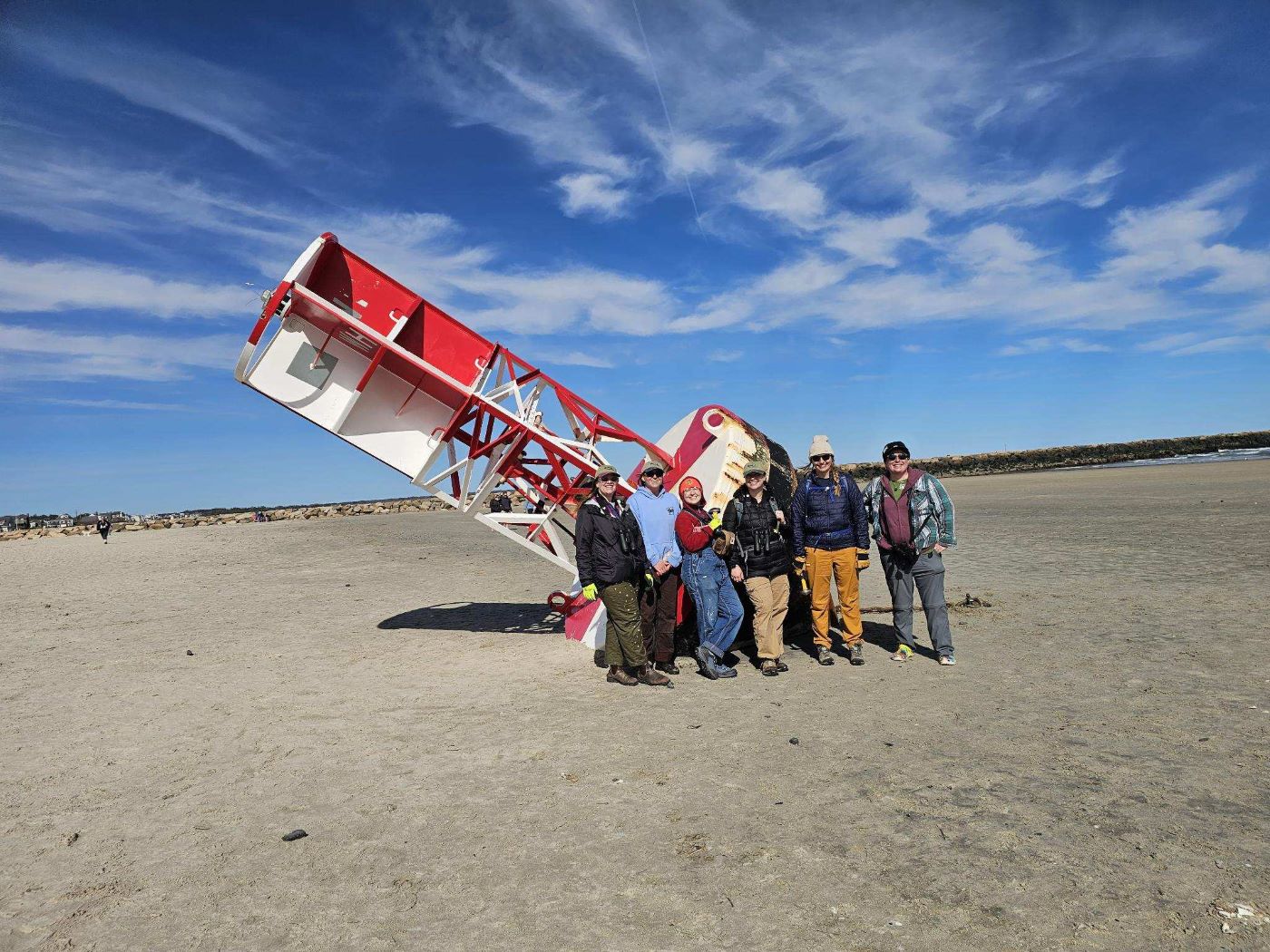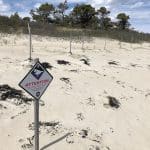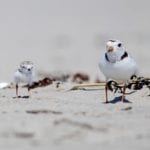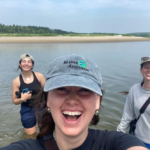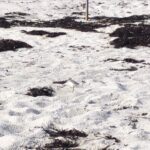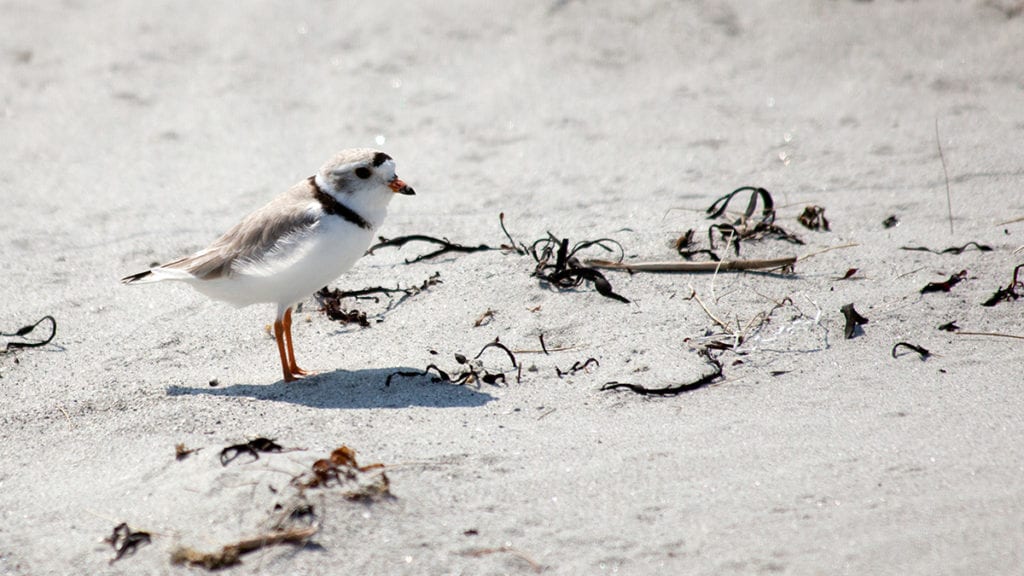
Each spring, endangered Piping Plovers and Least Terns return to nest and raise their young on southern Maine beaches. For more than 35 years, Maine Audubon and our partners have worked with local residents, landowners, and visitors to ensure that endangered birds, wildlife, and people can safely share the beach.
Piping Plovers and Least Terns need sandy beaches in order to nest and raise their young. Of course, people also love to live near and visit the beach. Over time, the development and construction of seawalls, jetties, piers, homes, parking lots, and other structures has significantly reduced the available shoreline habitat for these two species of birds.
The increase in Maine’s beachfront population has also brought more people and their pets to nesting beaches. This can keep adult plovers from tending to their eggs and chicks, which leaves the nests vulnerable to predators and the elements.
Latest News
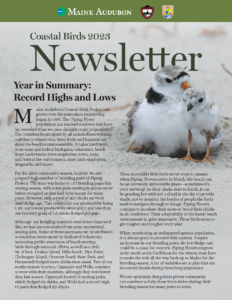 Newsletter: Find a recap of our work and current population counts in the 2023 Coastal Birds Newsletter.
Newsletter: Find a recap of our work and current population counts in the 2023 Coastal Birds Newsletter.
Blog: Read blog posts from the crew for the latest updates.
Social media: Follow the Maine Coastal Birds Project on Instagram
Media: Read this Portland Press Herald article (Beaches get a little more crowded as piping plover activity picks up) about volunteers and biologists on Old Orchard Beach (May 2022)
Video: Watch the 2021 Coastal Birds Crew create an exclosure to keep predators away from a Piping Plover nest.
Blog: Find out what a day in the life is like for the Coastal Birds Project crew. Read this profile of the 2020 team complete with videos, slide shows, and infographics.
Facts about Piping Plovers and Least Terns
Read our brochure about Maine’s Endangered Piping Plovers and Least Terns.
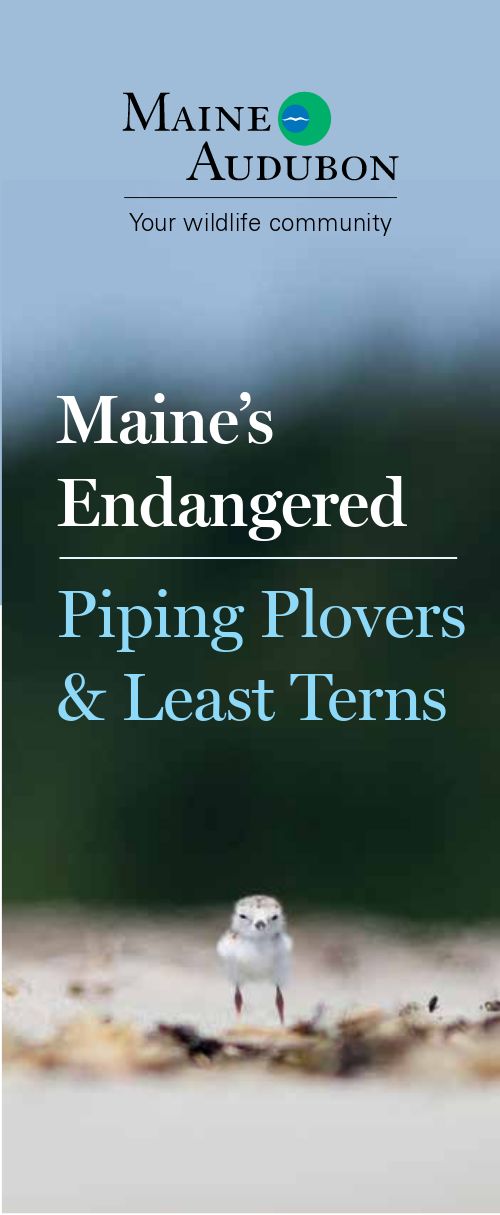
- Plovers and terns lay their eggs directly on the sand. The eggs (and chicks) are sand-colored, and can can be extremely difficult to see.
- When an adult Piping Plover perceives that a predator is threatening its nest, the bird will attempt to distract it by moving a few feet away, pretending to have a broken wing, and sounding a distress call. Even if this ruse works, the adult bird’s absence leaves the eggs or chicks vulnerable to the elements.
- When a plover chick feels threatened, it will freeze in the hope of being overlooked. Sometimes people mistake this for an injury and pick the chick up, which puts the chick at risk of injury or even death.
- Chicks regularly move up and down the beach in search of food and shelter, sometimes traveling miles from the nest. They can be found anywhere on the beach, including far away from signs and fencing.
- Encroaching development has limited nesting habitat, and has also caused an increase in the numbers of foxes, raccoons, skunks, gulls, and crows, which prey on eggs and chicks.
- Piping Plovers and Least Terns are well-adapted to surviving losses in the naturally dynamic system of a coastal beach, but only if the system is intact.
- The best (and only) place for these birds is on the beach. Please enjoy watching these amazing endangered birds from a distance!
How you can help
If you would like to volunteer for the Piping Plover Recovery Project, please visit our Volunteer page and contact us.
If you find a plover nest, please call our team at 207.245.2353 . You can also contact the Maine Department of Inland Fisheries and Wildlife (MDIFW) at 207.657.2345
How to share the beach with Piping Plovers
- Stay clear of fenced areas marked with “Restricted Area” signs. Observe the birds from a distance.
- If you see a hole that someone has enjoyed digging but abandoned for the day, fill the hole in so no chicks are inadvertently trapped.
- Keep dogs leashed and all pets far away from nesting areas. Roaming dogs and cats are among the top threats to the eggs and chicks of Piping Plovers and Least Terns.
- Fly kites well away from nesting areas. Plovers and terns mistake them for predators and leave their nests to ward off the “intruders.”
- Take your trash and food scraps with you when you leave the beach for the day. Garbage attracts gulls, foxes, raccoons, and skunks, which prey on plover and tern eggs and chicks.
- Notify Maine Audubon of any disturbances to nesting areas.
 Pets for Plovers
Pets for Plovers
Learn about our Pets for Plovers project and sign the pledge to be a respectful pet owner!
Reports
2023 Maine Piping Plover and Least Tern Project Report (pdf)
2022 Maine Piping Plover and Least Tern Project Report (pdf)
For Project Reports from 2021 and earlier, please email conserve@maineaudubon.org
The Piping Plover and Least Tern Recovery Project is a cooperative effort, with Maine Audubon working in partnership with the Maine Department of Inland Fisheries and Wildlife, the U.S. Fish and Wildlife Service, the Maine Bureau of Parks and Lands, and local municipalities to protect and conserve these rare shorebirds.
Latest News about Piping Plovers and Least Terns:

